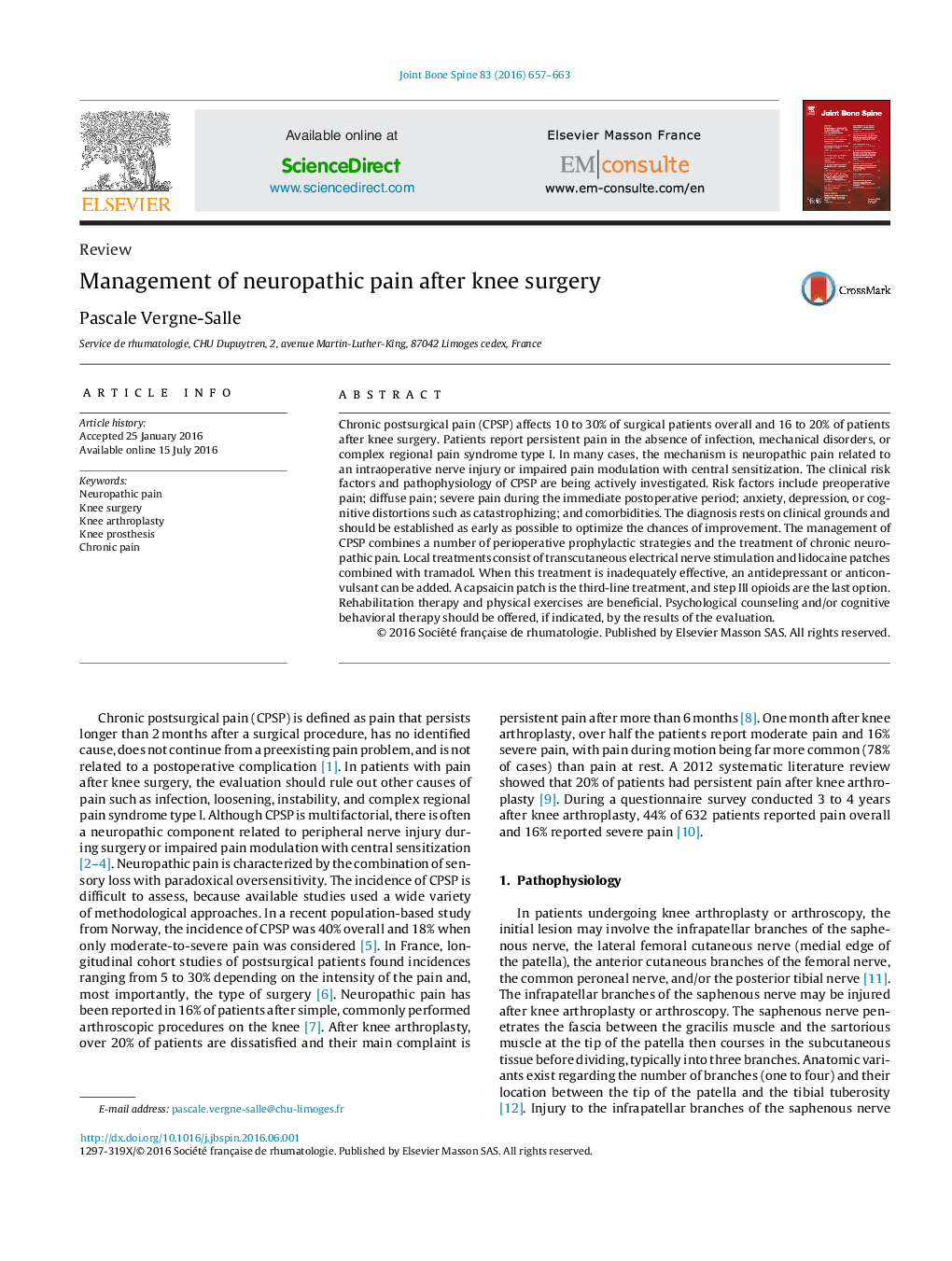| کد مقاله | کد نشریه | سال انتشار | مقاله انگلیسی | نسخه تمام متن |
|---|---|---|---|---|
| 5667641 | 1407864 | 2016 | 7 صفحه PDF | دانلود رایگان |
Chronic postsurgical pain (CPSP) affects 10 to 30% of surgical patients overall and 16 to 20% of patients after knee surgery. Patients report persistent pain in the absence of infection, mechanical disorders, or complex regional pain syndrome type I. In many cases, the mechanism is neuropathic pain related to an intraoperative nerve injury or impaired pain modulation with central sensitization. The clinical risk factors and pathophysiology of CPSP are being actively investigated. Risk factors include preoperative pain; diffuse pain; severe pain during the immediate postoperative period; anxiety, depression, or cognitive distortions such as catastrophizing; and comorbidities. The diagnosis rests on clinical grounds and should be established as early as possible to optimize the chances of improvement. The management of CPSP combines a number of perioperative prophylactic strategies and the treatment of chronic neuropathic pain. Local treatments consist of transcutaneous electrical nerve stimulation and lidocaine patches combined with tramadol. When this treatment is inadequately effective, an antidepressant or anticonvulsant can be added. A capsaicin patch is the third-line treatment, and step III opioids are the last option. Rehabilitation therapy and physical exercises are beneficial. Psychological counseling and/or cognitive behavioral therapy should be offered, if indicated, by the results of the evaluation.
Journal: Joint Bone Spine - Volume 83, Issue 6, December 2016, Pages 657-663
